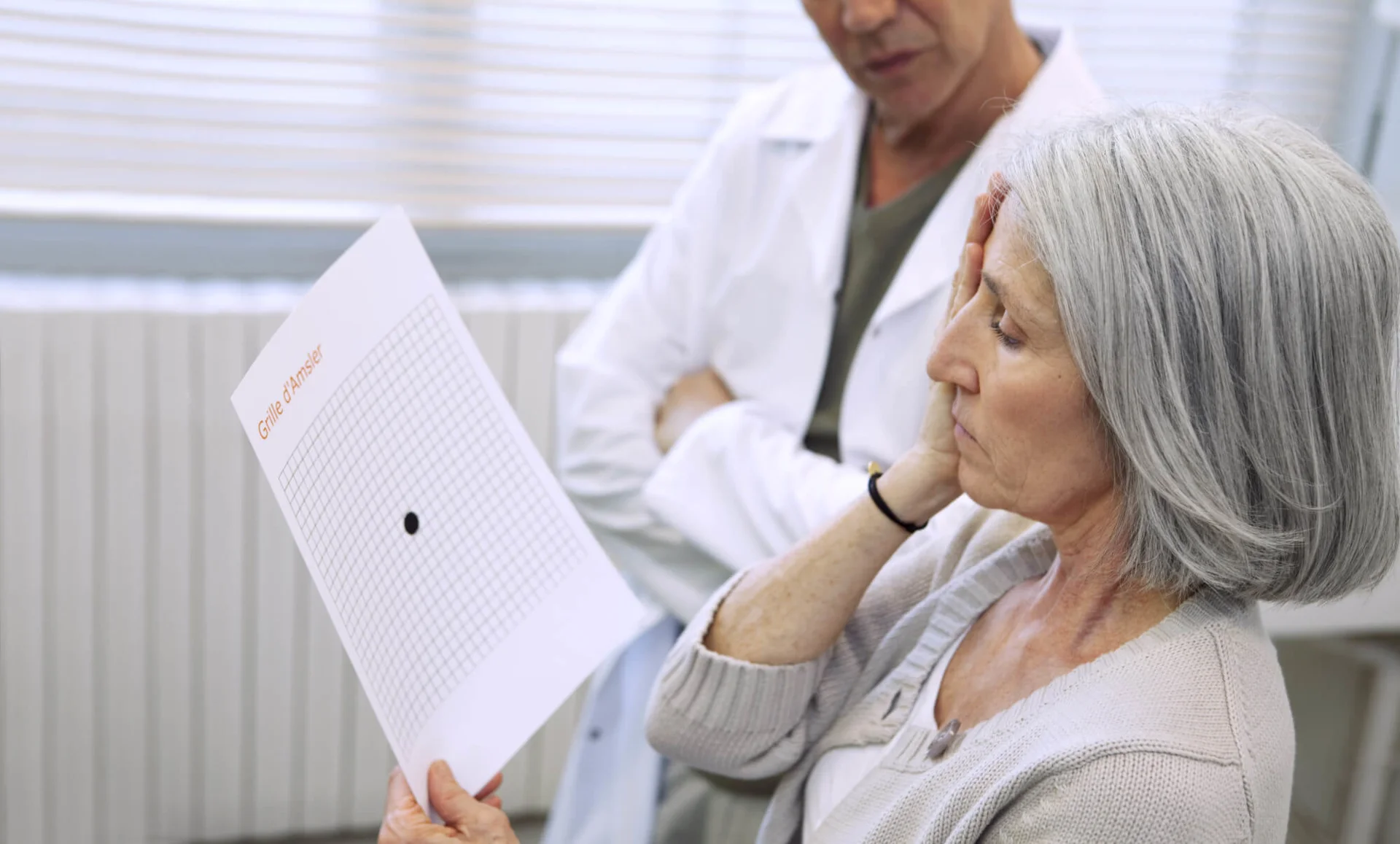
Macular Degeneration
All Info about macular degeneration (AMD)
Understanding Macular Degeneration
Macular degeneration, also known as AMD, is a common eye disease, especially among seniors, that can partially destroy the retina. It is important that it is detected and treated early, otherwise it can lead to vision loss and even partial blindness. The visual damage is mainly found in the central area of the visual field, so that there are problems with reading and face recognition, if both eyes are affected by AMD.
If treated early, the progression of the disease can be delayed with medication and minor surgery. But once vision loss occurs, it is considered irreversible. However, with the new SAVIR therapy there is now a new way to partially recover visual function despite the damage.

“The optimization of residual vision is a holistic complement to ophthalmological care such as eye drops or surgeries. We continue where ophthalmology stops. We combine conventional medical science with new findings from modern brain research and traditional medicine methods.”
How the Retina Translates Light into Sight
The retina of the eye converts light stimuli into nerve impulses. As soon as light hits certain molecules in the photoreceptor cells of the retina, nerve impulses are generated and transmitted from the retina via the optic nerve to the brain. Here they are processed to ultimately enable conscious vision so that things like pictures, faces or letters are recognized.
The Macula is critical for Central Vision
In macular degeneration, a specific area of the retina is damaged, the “yellow spot” (macula lutea, or “macula” for short). This is an area in the center of the retina that is particularly densely populated with light-sensing cells (so-called “photo-receptors”). If this yellow spot is damaged or lost in both eyes, subjective vision is massively disturbed, because whenever you look at something or fixate it, you cannot see it, e.g. the letters when reading. However, because the retina around the macula is usually still intact, one does not go blind completely with this disease and things to the side are still visible.
Types of Macular Degeneration
There are different forms of macular degeneration, of which age-related macular degeneration (AMD) is considered the most common form especially during the aging processes.
Macular Degeneration Therapy: Traditional and Novel Approaches
Macular degeneration is a chronically progressive disease that cannot be cured by conventional medicine so far. Drugs can be used to slow down the progression of the disease at most.
But now the newly developed SAVIR therapy opens up new perspectives for the treatment of macular degeneration. Its effectiveness is based on the observation that microcurrent treatment can be used to strengthen blood flow and thus the function of the still-surviving but inactive, “silent” nerve cells located within or at the edge of the damaged area.
The focus lies on how the retina and the brain can then help the eye. This is where the neuroplasticity of the neural tissue in the retina and brain networks helps. By re-activating “dormant” nerve cells, the loss of vision can be partially restored to improve visual functions.
The Potential of SAVIR Therapy
With the brains ability to adapt to changes, called “neuroplasticity”, and the normalization of a healthy blood circulation, visual signals are processed better again. In this way even people with macular degeneration have a chance to increase their vision through SAVIR therapy.
Worldwide Unique, Holistic Therapy for Optic Nerve Damage
0
Years of Research Leadership
Years of Experience and Success in Treating Patients
